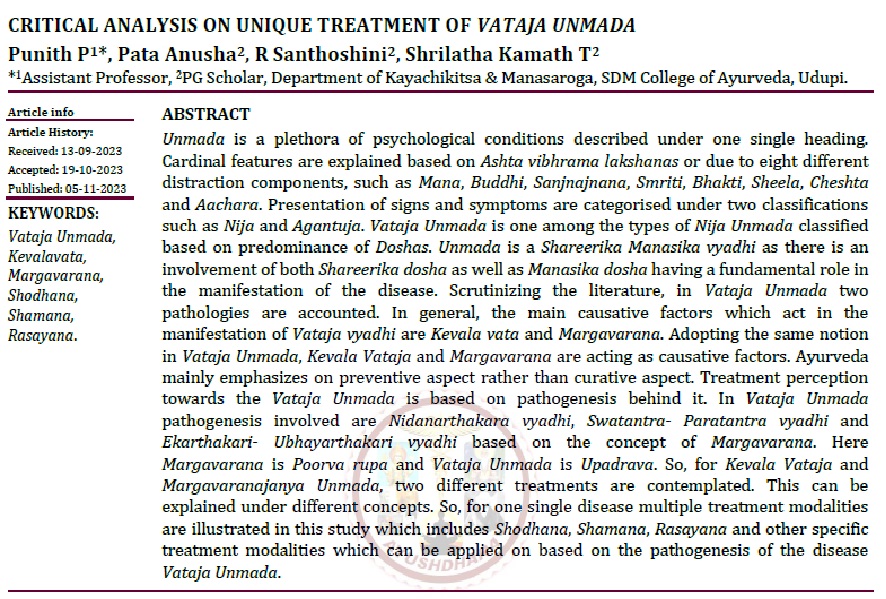Critical Analysis on Unique Treatment of Vataja Unmada
DOI:
https://doi.org/10.47070/ayushdhara.v10i5.1398Keywords:
Vataja Unmada, Kevalavata, Margavarana, Shodhana, Shamana, RasayanaAbstract
Unmada is a plethora of psychological conditions described under one single heading. Cardinal features are explained based on Ashta vibhrama lakshanas or due to eight different distraction components, such as Mana, Buddhi, Sanjnajnana, Smriti, Bhakti, Sheela, Cheshta and Aachara. Presentation of signs and symptoms are categorised under two classifications such as Nija and Agantuja. Vataja Unmada is one among the types of Nija Unmada classified based on predominance of Doshas. Unmada is a Shareerika Manasika vyadhi as there is an involvement of both Shareerika dosha as well as Manasika dosha having a fundamental role in the manifestation of the disease. Scrutinizing the literature, in Vataja Unmada two pathologies are accounted. In general, the main causative factors which act in the manifestation of Vataja vyadhi are Kevala vata and Margavarana. Adopting the same notion in Vataja Unmada, Kevala Vataja and Margavarana are acting as causative factors. Ayurveda mainly emphasizes on preventive aspect rather than curative aspect. Treatment perception towards the Vataja Unmada is based on pathogenesis behind it. In Vataja Unmada pathogenesis involved are Nidanarthakara vyadhi, Swatantra- Paratantra vyadhi and Ekarthakari- Ubhayarthakari vyadhi based on the concept of Margavarana. Here Margavarana is Poorva rupa and Vataja Unmada is Upadrava. So, for Kevala Vataja and Margavaranajanya Unmada, two different treatments are contemplated. This can be explained under different concepts. So, for one single disease multiple treatment modalities are illustrated in this study which includes Shodhana, Shamana, Rasayana and other specific treatment modalities which can be applied on based on the pathogenesis of the disease Vataja Unmada.
Downloads

Downloads
Published
Issue
Section
License
Copyright (c) 2023 AYUSHDHARA

This work is licensed under a Creative Commons Attribution-NonCommercial-ShareAlike 4.0 International License.


